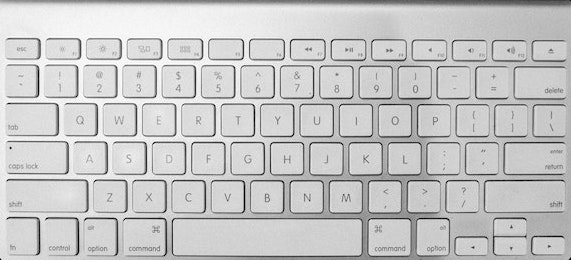
#Mac keyboard symbols guide mac#
It's just command-tab on a Mac instead of Control-Tab on PC.

#Mac keyboard symbols guide Pc#
Whereas on PC you'd press print screen or Alt-print screen to take a screenshot of just the app you're in, Mac gives you one more option without needing to open the snipping tool and mess with all that. Taking a screenshot on your Mac is an easier process than on your PC. You can get an umlaut with option-U, ƒ with option-F, © with option-G, and so on. If you wanted the accent over A, then you'd just press A instead of E on that third keystroke. Many special characters can be achieved by simply holding option on the Mac keyboard, pressing a specific key, and then pressing the key you'd like that character to affect.įor example, to type é, you'd hold option, press E, and then press E again. This is where the Mac keyboard makes life much easier for you in that you don't have to hit NumLk, hold down Alt, and remember a string of numbers. To actually quit a Mac app, you'll have to use command-Q (command-w simply closes the window you're in). On a lot of Windows laptops and in many applications, the Ctrl-W command will close the active app, but in most cases, Windows users probably use Alt-F4. If you want to kill off processes, you'll have to open the Activity Monitor app. This simply brings up a force quit window, which lets you force the apps that you have open to close.
#Mac keyboard symbols guide free#
On a PC, this would open the Task Manager, and you'd be able to kill processes in order to close programs that weren't responding or to free up some CPU (or to even kill malicious processes). Here are the biggest ones: Control-Alt-Delete The main actions you performed with just your keyboard on your Windows PC don't work in quite the same way as on a Mac. You can do so by clicking its icon in the dock or command-tabbing until you hit it. If you're want to search for files, open Finder. This is replaced by the Dock on Mac, which almost eliminates the need for a Start menu. The missing key is the Windows key, which opens the Start menu on PCs. You'll almost always find volume and brightness keys, playback controls, the escape key, and a smattering of other quick tools. The "F" key row is present on both keyboards, but functions will vary based on the specific keyboard/laptop/PC brand you have. You can execute all manner of commands this way, and the keyboard shortcuts are all the same: command-s is save, command-c to copy, command-v to paste, etc.

The command key on your Mac keyboard does the same thing the Ctrl key does on your Windows keyboard. All the keys do basically the same thing, but they differ slightly in name. The space bar row is probably the most important place where the Windows and Mac keyboard differ. 1 gives you an exclamation point, 4 gives you a dollar sign, and so on. It's all in the same place - ? is next to shift, ' is next to enter, and the number row is all the same in terms of what each one produces when you press it with shift.


 0 kommentar(er)
0 kommentar(er)
